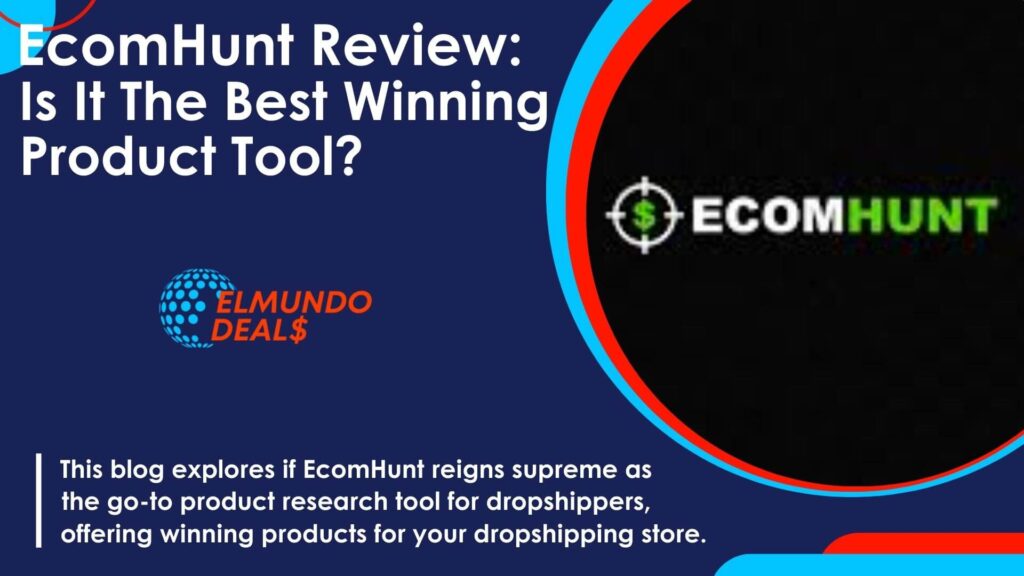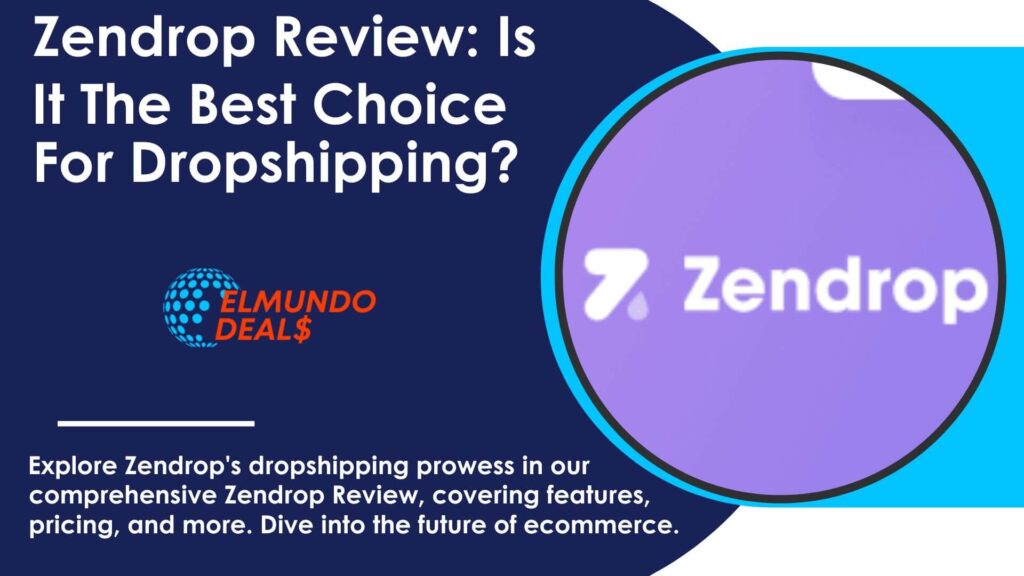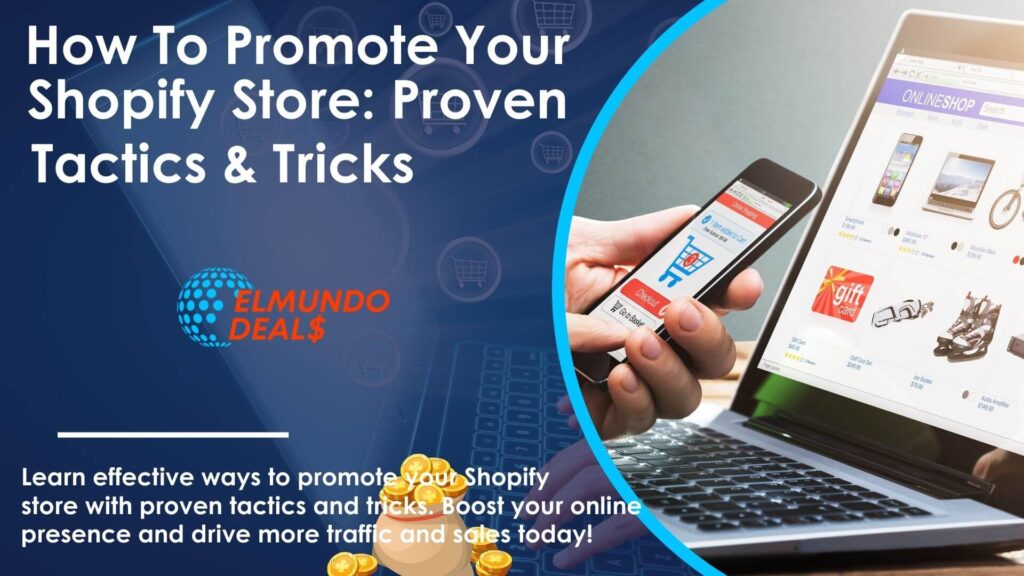How To Sell On Amazon FBA In 2023 – Complete Guide To Start Selling On Amazon For Beginners In 2023
Are you looking to start an online business and make money? Look no further than selling products on Amazon. As the leading online marketplace, Amazon offers an unparalleled opportunity for entrepreneurs to tap into a massive and ever-growing market.
Consider the staggering numbers: Two out of three American consumers shop on Amazon, most of whom are loyal Prime members. In the first quarter of 2023, 56% of U.S. consumers began their online product searches on Amazon.
If given the choice to buy from only one store, more than half would choose Amazon. With a remarkable 38% market share, Amazon is the largest ecommerce retailer in the U.S.
Despite global challenges such as the pandemic and economic uncertainties, ecommerce, particularly on Amazon, is thriving. A significant 57% of U.S. consumers make weekly purchases on Amazon, and 18% shop on the platform 2-3 times a month.
You can leverage Amazon’s Fulfillment by Amazon (FBA) program to start selling on Amazon. With FBA, you simply send your products to Amazon’s warehouses, and they take care of inventory storage, shipping, and customer support.
The added benefit of Amazon’s 2-day Prime shipping is that your products are delivered swiftly and attractively to customers.
The best part? It’s not as complex as it may seem. Even as a new seller, with the right product and commitment, you can earn tens or even hundreds of thousands of dollars per year by selling on Amazon.
This comprehensive guide will delve into the fundamentals of selling on Amazon and demystify the concept of Amazon FBA.
We’ll explore different business models and the advantages of selling private label products and provide insights into selecting the right niche and products to sell on Amazon.
By the end of this article, you’ll be equipped with the knowledge and strategies needed to navigate the world of Amazon FBA successfully and take your online business to new heights.
Join us on this exciting journey as we unlock the secrets of successful Amazon FBA entrepreneurship. We’ve covered you, from setting up your Amazon seller account to optimizing product listings and implementing effective marketing strategies.
Let’s dive in and explore the limitless possibilities that await you in the realm of Amazon FBA in 2023.
How to start selling on Amazon: The Basics
What is Amazon FBA?

Unleash the potential of Amazon FBA, an innovative program revolutionizing how sellers optimize their operations. With Fulfillment by Amazon (FBA), sellers leverage Amazon’s vast resources and infrastructure. By storing inventory in Amazon’s fulfillment centers, sellers offload packaging, shipping, and customer service.
It frees them to focus on sourcing great products and crafting compelling marketing strategies while Amazon handles logistics.
The true power of Amazon FBA lies in its efficiency and scalability. Through Amazon’s extensive network, sellers access a wide audience and benefit from reliable, fast shipping.
With the Prime badge on FBA products, sellers tap into Amazon’s loyal Prime customer base and enjoy the perks of two-day shipping, boosting sales potential.
Amazon FBA offers a hassle-free, cost-effective solution for inventory, fulfillment, and customer support. It simplifies the selling process, eliminates the need for a separate warehouse, and lets sellers concentrate on business growth.
Whether a small-scale entrepreneur or an established enterprise, Amazon FBA opens doors in the fiercely competitive e-commerce landscape.
How Does Amazon FBA Work?
Are you ready to uncover the secrets of Amazon FBA? Immerse yourself in this groundbreaking program, where Fulfillment by Amazon (FBA) acts as a finely tuned engine, empowering sellers to streamline their operations and tap into Amazon’s vast infrastructure.
Here’s how it works: Sellers begin their journey by sending products to Amazon’s cutting-edge fulfillment centers. Once received, Amazon oversees storage, packaging, and shipping with precision.
When a customer places an order, Amazon springs into action, ensuring swift delivery and freeing sellers to focus on their passion—creating remarkable products and expanding their market presence.
But there’s more! FBA goes beyond order fulfillment. Sellers enjoy top-tier customer support managed by Amazon’s dedicated team. From inquiries to issues, Amazon has it covered. This level of service fosters trust and loyalty among customers, leading to long-term success.
The true enchantment of Amazon FBA lies in its all-in-one solution. It simplifies the selling process, freeing up time and resources for business growth.
Whether you’re a seasoned entrepreneur or starting anew, FBA offers an unparalleled opportunity to tap into Amazon’s vast customer base, seamless logistics, and unparalleled support.
Ready to embark on your FBA adventure? Let Amazon’s powerhouse program propel your business to new heights while you focus on your expertise—bringing awesome products to the world. Experience the wonders of FBA and unlock your business’s full potential in the ever-evolving realm of e-commerce.

Amazon Business Models
There are five ways to generate income on Amazon, each with its unique approach:
1. Private Label:This method involves building your brand and selling exclusive products under your label. By creating something distinct, you can differentiate yourself from competitors and even explore collaborations with influencers.
2. Wholesale: Instead of developing your brand, you can purchase bulk products directly from established brands or distributors at discounted prices. Then, you sell these items on Amazon at a markup, leveraging their brand recognition.
3. Reselling/Arbitrage: If you have a knack for finding great deals, reselling might be for you. Hunt for discounted products through retailers or online platforms and resell them on Amazon to earn a profit.
4. Dropshipping: This method involves partnering with manufacturers who handle order fulfillment and shipping directly to your customers. You act as the middleman, focusing on marketing and customer acquisition.
5. Handmade: Amazon also welcomes artisans and crafters to sell their handmade creations. This category allows you to showcase your unique skills and craftsmanship by producing and selling your one-of-a-kind items.
By understanding these different approaches, you can choose the one that aligns best with your interests, resources, and goals.

How to sell private label products on Amazon FBA:
Private label is the go-to strategy for selling on Amazon FBA, and it’s a goldmine of profit potential. This method, chosen by a whopping 71% of Amazon sellers, allows you to find or produce bulk products that you can sell under your brand. Let’s break it down into simple steps:
1. Product research: Your first task is identifying products with high demand and low competition on Amazon. This crucial step sets the foundation for your success.
2. Product sourcing: Find a reliable supplier or manufacturer to create your products at the right cost. They’ll even handle shipping your items directly to Amazon’s warehouses, making your life easier.
3. Product listing: Create a captivating listing for your product within your Amazon seller account. It is where you brand your product and make it stand out.
4. Promotion: Launching and advertising your product is key to getting noticed amidst Amazon’s vast catalog. You aim to rank high in the product search results and attract customers.
5. Sales management: Keep a close eye on your inventory and sales. As your business grows, scale it accordingly to ensure a steady stream of profits.
But the best part is that Amazon takes over once a customer orders your product. Here’s what they do:
a. Amazon receives your products and stores them in its colossal fulfillment centers, operated by both robots and dedicated employees. Your products are carefully inventoried and sorted, with Amazon going above and beyond to protect your investment.
b. When a customer orders, Amazon handles the entire transaction process automatically. Your product is picked from the warehouse shelves, meticulously packed into an Amazon box, and swiftly shipped to the customer’s doorstep.
c. Amazon takes charge of customer communications, providing shipping notifications, tracking information, and managing reviews and returns. Their expertise ensures a seamless experience for customers.
In a nutshell, private label is a highly profitable and scalable business model on Amazon FBA. While Amazon handles warehousing and fulfillment, and your supplier handles production, your role is to find winning products and market them effectively.
Amazon FBA Vs Amazon FBM
You have two fulfillment options when selling on Amazon: FBA (Fulfillment by Amazon) and FBM (Fulfillment by Merchant). Let’s explore the differences between the two and see which suits your business needs.
FBM puts the responsibility of fulfillment on the merchant. You handle inventory, sorting, packing, and shipping as a seller. Alongside product research and marketing, ensuring that items reach buyers in good condition falls on your shoulders.
On the other hand, FBA leverages Amazon’s vast fulfillment infrastructure. You or your supplier send products to Amazon’s warehouses, which handle storage, inventory, and customer service. If any items are damaged, Amazon reimburses the full retail price.
When a customer orders, Amazon handles processing, picking, packing, and shipping. They handle shipping notifications, tracking, reviews, and product returns. This relieves you of the headache of customer service, allowing you to focus on strategic business-building activities.
Choosing between FBA and FBM depends on your preferences and business goals. FBM gives you more control and personalization options, but you miss out on Prime eligibility. FBA provides convenience, access to a larger customer base, and the benefits of Amazon’s reputation but comes with additional fees.
Consider factors like your product type, target audience, budget, and fulfillment capabilities to make the right choice. Both options have pros and cons, so weigh them carefully and select the best fulfillment approach with your strategy and resources.
Choosing Your Niche
Selecting a profitable niche is a crucial step in your entrepreneurial journey. It’s like finding the perfect corner in a bustling marketplace where you can shine and attract customers. Let’s explore the importance of choosing a profitable niche and the factors to consider when making this crucial decision.
Regarding your niche, profitability is the name of the game. You want to identify an area where demand is high, competition is manageable, and profit margins are attractive. A profitable niche ensures a hungry audience is ready to invest in your products or services.
Consider the following factors when choosing your niche. First, think about your passion and expertise. Select a niche that aligns with your interests and knowledge. Your enthusiasm will fuel your efforts and keep you motivated during the ups and downs of entrepreneurship.
Next, assess the market demand. Conduct thorough research to understand your target audience’s needs, preferences, and pain points. Look for gaps in the market that you can fill with innovative solutions or unique offerings.
Evaluate the level of competition in your chosen niche. While competition can be healthy, too much of it might make establishing your brand challenging and capturing market share challenging. Find a balance where you can differentiate yourself and stand out from the crowd.
Additionally, consider the profit potential of your niche. Analyze pricing trends, profit margins, and the scalability of your business within that niche. You want to ensure that your efforts result in sustainable and profitable growth.
Choosing a profitable niche requires market research, self-reflection, and strategic thinking. It’s about finding that sweet spot where your passion meets a hungry market. So, take your time, weigh the factors, and select a niche that sets you up for success in the dynamic business world.
Finding The Right Products To Sell On Amazon
When it comes to selling on Amazon, finding the right products can make all the difference in your success as an online seller. It’s not just about randomly picking items and hoping for the best. Instead, it requires careful consideration of profitability, demand, and competition.
Let’s delve into these factors to help you identify the perfect products to sell on Amazon.
Profitability is the lifeblood of any business, and selling on Amazon is no exception. You want to choose products with a healthy profit margin to ensure your efforts translate into financial success.
Start by analyzing the cost of acquiring the product, including manufacturing, sourcing, shipping, and Amazon fees. Balance this against the potential selling price to determine if the product can generate a desirable profit.
Consider the expenses beyond the product, such as packaging, marketing, and advertising. These costs should be factored into yourprofitability analysis. Remember, it’s about making sales and earning a sustainable income from each transaction.
To determine the profitability of a product, you can follow the “rule of 3s.” This rule suggests dividing the product’s selling price into three equal parts: landing costs, platform fees, and your profit. For example, if a product sells for $27, your profit should be $9. If the profit falls below this threshold, it may not be profitable.
Remember that Amazon products typically sell within the price range of $20 to $70. Selling products below $20 may not leave you with enough profit after covering all costs.
On the other hand, selling products above $70 might deter customers from purchasing them due to the higher price tag associated with lesser-known brands.
It’s essential to understand the different costs involved, such as land costs, including inventory costs, inspection fees (if any), shipping, duties (if any), and Amazon fees.
Additionally, you need to consider referral or commission fees for each item sold, selling plan fees, fulfillment fees, storage fees, and other business expenses. Remember, marketing your products and driving traffic to your Amazon listings incurs additional costs that can impact your profits.
By carefully assessing the profitability of each product, you can make informed decisions that will save you from potential regrets down the line.
The demand for a product is a key driver of sales and revenue. You want to identify products that have a high level of demand among Amazon’s vast customer base. Research market trends, consumer behavior, and product popularity to understand which products are in demand.
Look for products that solve a problem, fulfill a need, or cater to a specific target audience. Pay attention to customer reviews, feedback, and ratings to gain insights into what shoppers seek. Understanding and aligning with customer demand increases the likelihood of attracting buyers and generating consistent sales.
To gain a deeper understanding of market demand on Amazon, you can utilize the tools and resources available. Look for keywords, search volume, and sales rank data to gauge interest in a particular product. This data can guide you in choosing products with a higher chance of success.
Remember, demand is not static, and it can change over time. Stay updated on industry news and consumer preferences to adapt your product selection strategy as the market evolves. By staying attuned to customer needs and market trends, you can position yourself for long-term success.
Competition on Amazon is fierce, with millions of sellers vying for customers’ attention. While it’s a positive sign to have a thriving marketplace, you must carefully evaluate the competitive landscape.
Avoid oversaturated products with sellers, as it can be challenging to stand out and gain a significant market share. Instead, focus on niches or subcategories where competition is relatively low. Look for products with a reasonable balance of demand and competition, where you can carve out a unique selling proposition.
To effectively assess the competition, conduct a thorough analysis of competing products. Examine their pricing, features, customer reviews, and overall brand presence.
This will help you identify opportunities to differentiate yourself and offer something unique or superior to the existing options. It could involve improving product quality, packaging, customer service, or marketing strategy.
It’s important to note that competition shouldn’t deter you from entering a market. Instead, it should motivate you to find innovative ways to set yourself apart and create a compelling value proposition for customers.
Putting It All Together: Finding profitable, high-demand, and low-competition products on Amazon requires a combination of research, analysis, and strategic thinking.
Start by defining your profitability goals and considering the costs associated with the product. Then, explore market demand and identify products that resonate with consumers.
Finally, assess the competition and determine how you can differentiate yourself.
Invest time and effort in market research, keyword analysis, and customer insights. Leverage available tools and resources to understand market trends and customer preferences better. Stay updated on industry news and be open to adapting your product selection strategy as the market evolves.
Remember, finding the right products is an ongoing process. Continuously monitor and evaluate your product performance, customer feedback, and market trends. Be prepared to pivot, adjust, and expand your product offerings based on the evolving demands of the Amazon marketplace.
With careful consideration of profitability, demand, and competition, you can identify products that have the potential to thrive on Amazon. By selecting profitable products with high demand and manageable competition, you position yourself for success in the ever-growing e-commerce landscape.
However, it’s important to remember that finding the right products to sell on Amazon also involves understanding your expertise, interests, and resources.
Consider products that align with your knowledge and passion, making the selling process more enjoyable and allowing you to connect with your target audience on a deeper level.
As you embark on your product search journey, leverage various research tools and techniques to gather data and insights. Conduct keyword research to identify popular search terms related to your potential products.
Analyze product reviews, customer feedback, and ratings to comprehensively understand customer preferences and pain points.
The key to a successful Amazon FBA business is having the right product. These should be high-demand, low-competition items, which means many customers are looking for the item, but only a handful of sellers are selling it.
What products sell on Amazon the most?
Amazon has several top-selling categories that consistently attract a large number of sellers. Here are the top 10 categories and the percentage of sellers listed in each category. This information can be helpful for sellers looking to enter or expand their business on Amazon.
These categories have a significant presence on Amazon and attract many sellers. While they offer a wide range of products and potential customers, finding a niche or subcategory where you can stand out and avoid overly saturated markets is important.
Starting your product research
Amazon’s extensive database of millions of product listings is a valuable resource when starting your product research. By applying relevant filters, you can quickly find the right products using the platform’s powerful search capabilities.
Here’s a step-by-step guide on how to kickstart your research process and find profitable opportunities in a tone that mimics human writing.
1. Leverage Amazon’s Filters: Amazon offers a range of filters to help you narrow your search and find promising product ideas. According to Jungle Scout, suggested filters include price, sales, number of reviews, rating, and Listing Quality Score (LQS). You can identify products with proven demand and manageable competition using these filters.
Learn More:

2. Seek Improvement Opportunities: Rather than reinventing the wheel, focus on finding products that can be enhanced or differentiated from what’s already on the market. An effective way to identify improvement potential is by examining customer reviews.
Look for common pain points and work towards addressing them. You can even purchase competitor products to gain firsthand experience and determine how to enhance them.
3. Observe Trends and Performance: Dedicate sufficient time, ideally 2-4 weeks, to observe product trends and performance. This will allow you to differentiate between sustainable demand and temporary spikes caused by one-time promotions or other factors.
Tracking performance over time allows you to make more informed decisions and avoid relying on short-term fluctuations.
4. Beware of “Black Hat” Behavior: While exploring products to sell on Amazon, it’s essential to maintain ethical practices and comply with Amazon’s policies. Avoid “black hat” behavior, such as selling counterfeit or imitation products.
Respect intellectual property rights, including patents and trademarks, and ensure your products meet Amazon’s restrictions and certification requirements. For instance, a Children’s Product Certificate (CPC) is required to sell certain subcategories within the toys and Games industry.
5. Consider Sourcing, Shipping, and Importation: Before finalizing a product to sell, consider the practical aspects of sourcing, shipping, and importation. Aim for products that require simple changes, such as logo or packaging modifications, to ease the manufacturing process.
Opt for products that are lightweight yet durable enough to withstand shipping conditions. If importing from another country, familiarize yourself with importation regulations and seek assistance from freight forwarders if needed.
6. Evaluate Additional Factors: Apart from profitability, demand, and competition, take into account other factors that can impact your product’s success.
Assess the size and weight of the product for affordable shipping, consider year-round demand to avoid seasonality issues, and aim for a niche that an existing brand does not dominate. These considerations will help refine your product selection and increase your chances of standing out in the market.
In the quest to research Amazon suppliers, it becomes crucial to identify the manufacturers who can deliver impeccable products at the most favorable prices.
With countless manufacturers scattered across the globe, it’s prudent to narrow your options to those capable of meeting your quality and affordability standards.
To uncover these suppliers, several avenues can be explored. For instance, Alibaba.com stands as the world’s largest business-to-business platform, mirroring Amazon’s search functionality and assisting you in discovering relevant products and their corresponding manufacturers.
Alternatively, Jungle Scout’s Supplier Database presents a comprehensive resource, housing a vast repository of global manufacturers and suppliers, allowing you to unearth legitimate and verified product suppliers. This database offers multiple search options, enabling you to browse by product, company, supplier name, or ASIN.
Sourcing agents also play a pivotal role in the supplier selection process. Their expertise in sourcing products of superior quality and competitive pricing and their linguistic skills in the country of origin can grant you a valuable advantage. Reputable sourcing agents can be found online, offering services to aid your search.
When evaluating potential suppliers, certain key attributes must be taken into account. First and foremost, prioritize high-quality products, as discerning Amazon shoppers value reviews as much as they do prices.
Furthermore, consider the supplier’s experience in manufacturing your specific product for at least three years, as this indicates proficiency and expertise.
Effective communication is vital, so seek responsive suppliers and maintain reasonable response times. Finally, ensure that the price quoted by the supplier aligns with fairness and avoids significant deviations from the market average.
By adhering to these guidelines, you will embark on a path to discovering reputable Amazon suppliers equipped to deliver the quality, communication, and pricing your business requires.
Remember, customer satisfaction on Amazon hinges on a delicate balance between product excellence and affordability, thus necessitating a diligent supplier search.
To identify potential suppliers, compare and create a list of 5-10 candidates. Email them individually by sending an introductory email using either Jungle Scout’s Supplier Database or Alibaba.com’s request for quotation (RFQ) feature.
Assess the suppliers based on their responses and communication, narrowing your options to the top 3. Specify your product requirements and request quotes for customization from each supplier. If using Alibaba.com, you can send a single request to multiple suppliers.
Please pay attention to the responsiveness of the suppliers as an indication of their efficiency.
Contact the shortlisted suppliers for their products, pricing, and relevant details. Introduce yourself, describe your business, and provide specific requirements.
Seek detailed quotes covering product costs, shipping fees, minimum order quantities, and lead times. Establish open communication channels for ongoing discussions and clarifications.
Once you have shortlisted suppliers based on your initial outreach, the next step is to order samples, which is crucial for ensuring the product’s quality and suitability. Typically, samples cost between $50 and $150 and are shipped via air, arriving within 1-2 weeks.
When ordering samples, it is advisable to request more than one from each supplier to ensure consistency in quality. Additionally, some suppliers may credit the sample cost if you proceed with a bulk order, so it’s worth inquiring about this possibility.
Upon receiving the samples, carefully examine them for quality, adherence to specifications, and functional utility. If the product falls short of your expectations, you can discuss modifications with the supplier, considering there may be an additional charge for such changes.
Modifications could involve adding a logo, adjusting dimensions, or including or removing components, among other possibilities.
Before placing a large bulk order, consider whether you want branded product packaging. This refers to the box, bag, or sticker that encases your product within Amazon’s boxes.
If you opt for branded packaging, ensure you have the design ready and provide the supplier or manufacturer with the precise dimensions for packaging. Collaboration with a graphic designer can help create an appealing and cohesive brand look.
The sample evaluation process is crucial in making an informed decision and ensuring your products’ quality, functionality, and branding. Effective communication with the suppliers, clear specifications, and attention to detail will contribute to achieving your desired outcome.
Once you have evaluated the product samples and decided, it’s time to choose a supplier, finalize your order, and get your products to Amazon’s warehouses to start earning sales. Inform the selected supplier about your decision and place your initial order.
Settle the invoice and wait for the manufacturing process, which typically takes 2-6 weeks. Maintain regular communication with the supplier during this time and request updates on progress.
After manufacturing, arrange shipping to Amazon, either through the supplier or with the help of a freight forwarder for international shipments. Conduct a quality inspection to ensure the products meet the agreed specifications.
Meanwhile, prepare for the launch of your business on Amazon by optimizing listings and planning marketing strategies. Maintain a positive relationship with the supplier, communicating effectively and addressing any issues promptly.
Monitor production and shipping progress to meet deadlines. By following these steps, you can successfully select a supplier, finalize your order, and prepare your products for sale on Amazon.
How to list products on Amazon As An Amazon Seller?
Having well-crafted product listings on Amazon is vital for customer discovery and product success. Properly setting up your listing ensures quick customer access, while inaccuracies can bury your products in search results.
Utilizing the right keywords based on data analysis allows you to target interested and ready-to-purchase customers effectively. There are several important steps to follow. Let’s delve into each step in detail:
- Research keywords to include in your listing
Researching keywords is vital for optimizing your Amazon product listing. Identify relevant keywords that potential customers use when searching for similar products. Utilize tools like Jungle Scout’s Keyword Scout to find high-performing keywords.
Look for keywords used by customers who have purchased similar products and by your top competitors. Strategically incorporate these keywords in your listing to improve visibility and ranking. Prepare a comprehensive list of keywords before creating your listing to maximize its effectiveness.
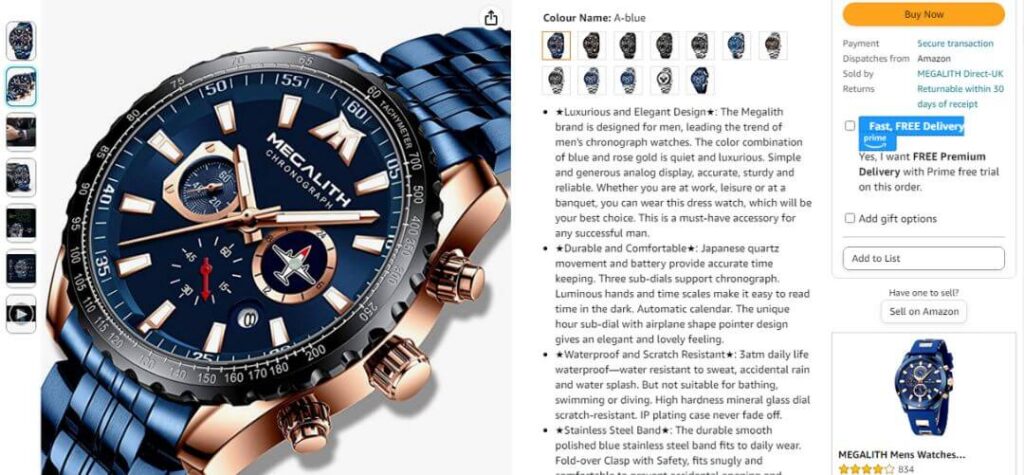
- Purchase the UPC barcode for your product.
It would be best to have a UPC barcode to identify your product and create a unique listing on Amazon. Obtain a UPC barcode from authorized resellers like GS1, who standardize these codes globally. Ensure that the purchased barcode corresponds to the correct product in your inventory.
Amazon mandates using UPC barcodes for all its products, so include them under the Product ID section when creating your Seller Central listing.
- Create your listing in Seller Central.
To start listing your products on Amazon, access Seller Central, the platform for managing your Amazon account. Within Seller Central, navigate to the “Inventory” tab to create your listings.
Begin by adding your product and selecting the appropriate category and subcategory.
Include the UPC code under the product ID section and provide the product title and brand name.
Remember, you can always return to edit your listing and make changes to optimize its performance. Experiment with different product details to improve sales.
Utilize additional sections in the listing setup to add variations, such as sizes or colors, and assign SKUs for inventory tracking. Don’t forget to include essential product description details, keywords, and compelling images.
Once you’re satisfied with your listing, click “save changes,” it will be visible in Seller Central under “Manage inventory.” Take advantage of this opportunity to showcase your products and attract potential customers on the Amazon marketplace.
- Draft your listing’s title.
Your listing’s title plays a vital role in catching the attention of potential customers. It should be concise, informative, and incorporate relevant keywords.
Create a compelling title that accurately represents your product and encourages customers to click on your listing. Remember the character limits Amazon sets and prioritize important details in your title.
When crafting your product or listing title, focus on being descriptive using appropriate keywords. Avoid stuffing the title with unrelated keywords and ensure it flows naturally and is easy to read. Utilize the maximum allowed character count for both the title and other sections of your listing.
Include high-volume keywords relevant to your product and frequently searched by customers. Aim for keywords with over 1,000 monthly searches, as those are the ones your competitors rank for.
- Draft your listing bullet points.
Bullet points are a powerful tool for showcasing your product’s key features and benefits. They allow you to communicate the most important selling points succinctly.
Focus on highlighting the unique aspects of your product, its advantages over competitors, and any specific attributes that appeal to customers. Ensure your bullet points are well-structured, easy to read, and provide valuable information to potential buyers.
In your bullet points, shift the focus from keywords to informing customers about your product’s main features and uses. Include additional relevant keywords that couldn’t fit in your listing title. Make use of the maximum character limit allowed.
Consider the following tips when crafting your bullet points:
- Clearly explain the main selling points and how they benefit the user. Address commonly asked questions and emphasize what the product does or solves.
- Adapt your tone and details based on the nature of your product. For example, if you’re selling a tool, concisely describe its functionality, materials, and construction. If it’s a toy, make the copy exciting, evoking the joy and amusement it brings.
- Include relevant information such as sizing, quantity, materials, and other applicable details.
- Draft your listing description.
The product description provides a detailed overview of your product, highlighting its features, functionality, and specifications. Write a compelling and informative description that addresses customer questions. Use formatting options like paragraphs, headings, and bullet points for readability.
Include additional keywords or details that didn’t fit in the bullets. Brand-registered sellers can replace the description with A+ content for customization. Maximize the space by focusing on the main features and benefits, using bullet points for conciseness.
Be honest, use keywords naturally, and adjust the tone based on the product type. For tools, explain how they work and their materials. For toys, create a playful description. Always include relevant information to help customers make informed decisions.
- Get quality images for your listing.
Compelling and informative product photos are crucial for effective marketing. Customers often prioritize viewing images before reading descriptions, especially on mobile devices.
Ensure your photos are high-quality and visually engaging. Consider hiring a professional photographer to present your product better than competitors.
Familiarize yourself with Amazon’s photography requirements:
• Accurate representation of the product.
• Main image on a plain white background, without props or watermarks.
• Product occupies 85% of the main image.
• Minimum size of 1000px by 500px, preferably larger.
• Up to nine photos allowed.
Avoid Amazon logos, trademarks, or confusingly similar elements. Exclude badges like “Amazon’s Choice” or “Best Seller.”
Invest in professional photography or capture clear, well-lit images showcasing different angles. Follow Amazon’s guidelines for size and format. Highlight features, demonstrate usage, and create visually appealing representations.
Mobile users prioritize photos, so make them attention-grabbing. Include lifestyle shots showing product usage. Keep photos clear and simple for optimal mobile viewing.
Adhere to Amazon’s requirements for the main image: white background, no watermarks, and zoomable. Aim for 1000px by 500px resolution with 85% product coverage. Maximize the potential with up to nine photos.
- Use Product Video If Possible
Consider leveraging product videos to capture customer interest and boost conversion rates. Videos provide an immersive experience, allowing customers to visualize your product in action. They effectively highlight its features, functionality, and unique selling points.
By incorporating product videos, you can enhance your listing, stand out from competitors, and effectively communicate the value and benefits of your product. Additionally, brand-registered accounts have the advantage of uploading product videos.
To optimize your product listings further, you can utilize Amazon Listing Optimization Tools, proven to generate consistent sales.

What are the Amazon FBA Fees?
When selling on Amazon through its Fulfilled by Amazon (FBA) program, as much as it offers exceptional services, it’s important to be aware of the associated fees you must pay.
These fees cover services Amazon provides to handle storage, packaging, shipping, returns, and more. Let’s take a closer look at some of the key FBA fees:
1. Fulfillment Fees: These fees encompass the cost of Amazon’s fulfillment services, including picking, packing, and shipping your products to customers. The fees are calculated based on factors such as the item’s size, weight, and category. It’s important to consider these fees when pricing your products to ensure profitability.
2. Long-Term Storage Fees: If your inventory remains in Amazon’s fulfillment centers for an extended period, you may incur long-term storage fees. These fees incentivize sellers to maintain optimal inventory levels and prevent excessive storage of slow-moving products. The fees are typically assessed semi-annually.
3. Monthly Inventory Storage Fees: Amazon charges monthly inventory storage fees based on the volume of space your products occupy in their warehouses.
The fees vary depending on the time of year and whether your products fall under the standard-size or oversize category. Monitoring inventory levels and managing storage effectively can help minimize these fees.
4. Returns Processing Fees: When a customer returns a product, Amazon handles the processing, inspection, and potential restocking of the item. Return processing fees cover the cost of these services. It’s crucial to factor in these fees when evaluating your overall return policy and managing customer returns.
5. Removal and Disposal Fees: Should you decide to remove or dispose of your inventory from Amazon’s fulfillment centers, such as for product liquidation or recall, removal and disposal fees may apply. These fees cover the costs associated with returning or disposing of your products.
6. Unplanned Service Fees: Unplanned service fees may be incurred when there are discrepancies between the number of units received and the quantity listed in your inventory. These fees encourage sellers to maintain accurate inventory records and promptly address discrepancies.
Understanding these FBA fees is crucial for effectively managing your costs and optimizing your profitability on the platform. It’s advisable to regularly review and assess your inventory levels and sales performance to minimize fees and maximize your return on investment.
How to sell products on Amazon
How to get your first sales on Amazon Using PPC
Getting your first sale on Amazon may seem challenging, but subsequent sales will likely follow naturally once you achieve it. You can employ several strategies to secure that initial sale, but the most effective and recommended approach is Amazon’s Pay-Per-Click (PPC) advertising.
In a nutshell, PPC advertising, or Pay-Per-Click, involves bidding for advertising spots, with the highest bidders securing top positions in search results. Advertisers only incur costs when a customer clicks on their product.
By doing so, you can drive targeted traffic to your product, supplementing the organic clicks generated by Amazon’s search algorithms.
Compared to other advertising platforms like Google or Facebook, Amazon’s PPC is particularly effective because it directly targets shoppers who are already on the platform with the intention of making a purchase.
You can utilize PPC management software and tools to optimize your PPC campaigns and achieve high conversion rates. The principles of creating highly-converting product listings also apply to crafting effective PPC ads. This includes using relevant keywords, incorporating high-quality product images, and providing compelling descriptions.
Amazon provides three types of PPC ads: Sponsored Products, Sponsored Brands, and Sponsored Displays. Sponsored Products ads appear at the top and bottom of Amazon’s search results page, as well as in the product carousel on competitor’s listings.
Sponsored Brands ads, available to brand registered sellers, showcase your logo, headline, and up to three products. Sponsored Display ads help increase product exposure beyond Amazon.com by displaying your ads on external websites.
To kickstart your sales on Amazon, consider leveraging Amazon’s Pay-Per-Click (PPC) advertising platform. Here is a step-by-step process to help you optimize your PPC campaigns and maximize conversions:
Thorough Keyword Research: Conduct comprehensive keyword research to identify relevant search terms that align with your product. It ensures that your ads target potential customers actively searching for similar products.
Utilize keyword research tools and analyze competitor listings to uncover the most effective keywords to include in your PPC campaigns.
Compelling Ad Campaigns:
1. Create persuasive and visually appealing ad campaigns that effectively showcase your products.
2. Align your ads with the identified keywords to enhance visibility and attract the attention of potential customers.
3. Craft compelling ad copy highlighting your products’ unique features and benefits, addressing customer pain points and emphasizing value propositions.
Continuous Monitoring and Optimization: Regularly monitor the performance of your PPC campaigns and make data-driven adjustments.
Analyze click-through rates, conversion rates, and return on ad spend to refine your bidding strategy, targeting, and ad content for optimal results. Test different ad variations and track each performance to identify the most effective ones.
Bidding Strategy:
1. Adjust your bids strategically to balance competitiveness and budget constraints.
2. Consider bidding higher for keywords that generate higher conversion rates and adjust bids based on the performance of specific keywords.
3. Monitor keywords’ competitiveness and adjust accordingly to maintain visibility in search results.
Explore Additional PPC Types: While Sponsored Products ads are effective for most sellers, consider experimenting with Sponsored Brands and Sponsored Display ads to expand your advertising reach and potential customer base.
Sponsored Brands ads allow you to promote your brand and multiple products, while Sponsored Display ads extend your product exposure beyond Amazon’s platform.
To optimize your PPC campaigns and improve performance, follow these best practices:
• Initiate PPC campaigns as soon as possible, preferably starting with an automatic campaign after optimizing your product listing.
• Create ad groups for the three targeting types: broad, phrase, and exact. Broad targeting allows keywords to appear in any order and may include additional words.
Phrase targeting involves including the keyword phrase exactly as entered, with the option to include other words before or after. Exact targeting requires entering keywords exactly as you want people to search for them.
• Sponsored Product ads often yield the best results, but don’t hesitate to explore Sponsored Brands and Sponsored Display ads once you have successfully set up your campaigns.
• Avoid making frequent changes to your campaigns. Allow them to run for a certain period, assess their performance periodically, and make informed optimizations based on solid data analysis. Ideally, once a week.
How To Get Consistent Sales Through A Strong Product Launch?
Once your product listing is live on Amazon, it’s crucial to start generating sales to boost your Best Seller Rank (BSR) and ensure the growth potential of your Amazon FBA business. To secure higher rankings, consider the following three effective strategies:
1. Maintain a consistent inventory: Avoid running out of stock, as it can lead to your listing disappearing from search results, negatively impacting your sales and rank.
2. Utilize relevant keywords: Optimize your listing by incorporating keywords that align with customer search queries. This enhances your relevance and improves customer metrics.
3. Monitor and enhance customer success metrics: Keep a close eye on metrics such as conversion rates, click-through rates, add-to-carts, reviews, and purchases. Continuously improve these metrics to gauge product performance and resonate better with customers.
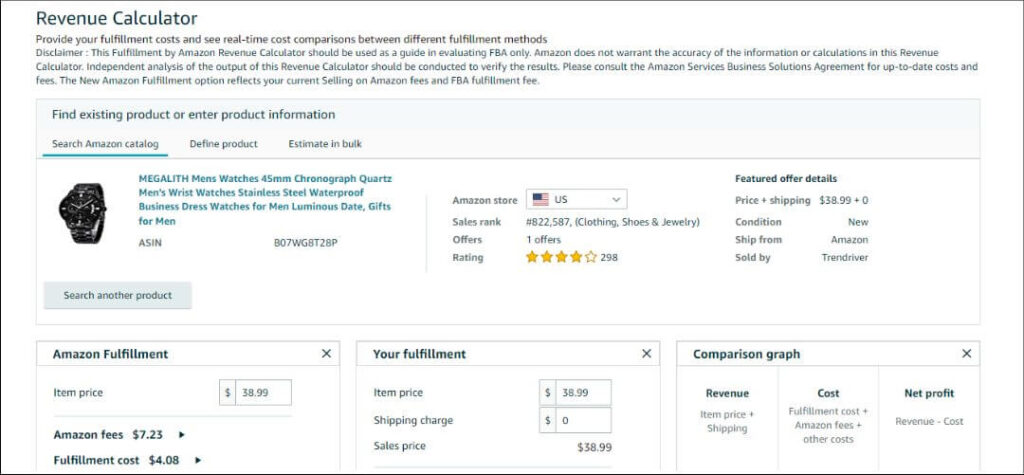

How to improve your Amazon conversion rate
While PPC ads can be effective initially, it’s important to diversify your marketing efforts to drive traffic to your Amazon listing. Consider leveraging content marketing orinfluencer marketing to attract customers.
However, simply getting views is not enough; you need to convert those views into actual purchases. Here are some tips to improve your conversion rates:
1. Price your product strategically: Carefully price your product to strike a balance between competitiveness and profitability. As a new brand, you may initially offer a slightly lower price than your competitors to attract attention. Use tools like Jungle Scout’s profit calculator to ensure viable and sustainable pricing. Remember the “Rule of 3s” we discussed earlier.
2. Offer temporary discounts: Take advantage of Amazon’s coupon feature to offer temporary discounts on your products. This eye-catching orange coupon not only grabs customers’ attention but also differentiates your listing from others, increasing the likelihood of conversions.
3. Request reviews using Amazon’s “Request a Review” functionality: Positive reviews are pivotal in boosting conversion rates. Utilize Amazon’s “Request a Review” feature, which sends automated email reminders to customers who have made a purchase within the last 30 days, encouraging them to leave a review.
Additionally, consider leveraging Jungle Scout’s Review Automation feature to simplify and expedite the process of sending review requests to eligible customers.
4. Utilize product inserts: Strategically use product inserts in your packaging to express appreciation to customers for their purchase and kindly request reviews. While designing these inserts, ensure compliance with Amazon’s Terms of Serviceto avoid violations.
Well-crafted inserts can encourage customers to leave reviews and contribute to your listing’s credibility.
5. Optimize your listing: Optimize your listing by incorporating relevant keywords, compelling product images, and engaging descriptions. Use high-quality images that effectively showcase your product’s unique features and benefits.
Craft descriptions that address customer pain points and highlight key selling points. Implement Amazon’s Enhanced Brand Content (EBC) feature to enrich your listing with additional images and detailed content.
Advanced seller strategies to grow your Amazon FBA Business
Scaling your Amazon business requires continuous effort and strategic decision-making. To help you achieve your goal of creating a 6-figure Amazon business, consider implementing these advanced strategies:
Continuously optimize your listings and PPC campaigns:
Selling on Amazon is an active and ongoing process. Regularly check your product listings and PPC campaigns to ensure they remain relevant to your target customers.
Address any customer questions promptly and take note of reviews that provide valuable suggestions for product improvements. Keep your ads performing at their best by removing poorly performing keywords and adjusting bids as needed.
Invest time and resources in building a strong brand presence around your products. Create social media accounts and engage in social media marketing to increase brand awareness and customer engagement.
Becoming a brand-registered account on Amazon grants you access to enhanced marketing features that can help your brand stand out. Additionally, focus on creating well-designed product packaging that reflects the quality and value of your brand.
Continue researching and exploring opportunities to introduce new products that complement your offerings. Expanding your product line can build credibility within your chosen niche and capture a larger market share.
Evaluate high-demand, low-competition keywords using tools like Jungle Scout’s Opportunity Finder to validate product ideas in your niche.
Although your products are stored in Amazon’s warehouses, managing your inventory effectively is essential. Find the right balance by maintaining a healthy inventory level that avoids stockouts while minimizing excess inventory.
Overstocking can lead to increased storage fees and missed sales opportunities. Aim to keep approximately 3 to 6 months’ inventory in Amazon’s warehouse, making adjustments for the holiday seasons.
Ensure the health and compliance of your Amazon account by closely monitoring and adhering to Amazon’s Terms of Service. Regularly review your account metrics and performance to avoid any violations or risks of suspension.
Comply with product policies, prioritize customer service, and promptly address product authenticity or safety complaints. Maintaining a positive overall customer experience is essential for long-term success on Amazon.
Consistently monitor your listings within Seller Central and on the live Amazon platform. Take the time to review all your product images, description details, and ensure they are displayed correctly.
Answer customer questions promptly and use email alerts to stay informed about customer inquiries. Stay vigilant about new reviews, as they can offer valuable insights for improving your products in the future.
Running an Amazon FBA business may seem manageable, but delegating certain tasks to a trustworthy virtual assistant (VA) can help you streamline your operations.
Assign administrative tasks such as optimizing PPC campaigns, sourcing new products, reconciling shipments, and handling listing issues to your VA. By offloading these responsibilities, you can focus your energy on strategic and high-level tasks that drive business growth.
Scaling your Amazon business requires a proactive approach and a commitment to continuous improvement. Following these advanced strategies, you can optimize your listings, strengthen your brand, expand your product line, maintain a balanced inventory, and delegate tasks to a virtual assistant.
These steps will help you build a successful Amazon business and move closer to achieving your revenue goals.

Pros and Cons of Sell On Amazon FBA?
When considering whether to sell on Amazon using the FBA (Fulfillment by Amazon) program, weighing the pros and cons is essential. While FBA offers numerous benefits, it also comes with certain drawbacks. Let’s delve into the expanded details of the pros and cons of selling on Amazon FBA:
Pros:
- Extensive customer reach: Gain access to a vast customer base, leveraging Amazon’s reputation and credibility.
- Fulfillment and customer service: Amazon handles storage, packaging, shipping, and customer service, freeing up your time.
- Prime eligibility: Products become eligible for Amazon Prime, attracting more customers with fast and free shipping.
- Scalability and flexibility: FBA accommodates large order volumes and enables selling across multiple marketplaces.
- Trust and customer confidence: Amazon’s reliability and customer service enhance brand trust and encourage purchases.
- Discounted shipping rates: Access favorable shipping rates, reducing expenses and making your products more competitive.
- Unlimited storage space: Store a wide range of products without worrying about physical limitations.
- Effortless shipping & logistics: Amazon manages the entire fulfillment process, saving you operational burdens.
- Inventory management: Robust tools and systems enable efficient tracking and management of inventory levels.
- Customer service management: Amazon’s support team handles customer inquiries and returns.
- Timely and quick delivery: Leverage Amazon’s distribution network for fast and reliable shipping, including Prime benefits.
- Omnichannel fulfillment: Fulfill orders from various sales channels, expanding your reach and providing a seamless experience.
Cons:
- Fees and costs: FBA fees can impact profit margins, requiring careful consideration of pricing and profitability.
- Lack of control over inventory: Relinquish direct control over inventory, facing potential challenges and risks.
- Competitiveness and Buy Box dominance: Fierce competition and factors influencing the Buy Box make visibility difficult.
- Limited branding opportunities: Amazon’s focus on products rather than brands may hinder brand differentiation.
- Potential account suspension risks: Violating Amazon’s policies can lead to account suspension, causing disruption.
- Product restrictions and category limitations: Some categories have specific requirements or restrictions.
- Dependency on Amazon: Relying solely on Amazon exposes your business to policy changes and platform decisions.
- Long-term fees: Consider cumulative expenses such as storage, fulfillment, and referral fees.
- Precise guidelines: Adherence to strict guidelines and policies is necessary to avoid penalties or account suspension.
Is Starting An Amazon FBA Business Still Worth It In 2023?
The answer lies in considering crucial factors. Amazon’s extensive customer reach remains unmatched, with millions of active shoppers globally. This vast market and Amazon’s reputation boost product visibility and credibility.
Fulfillment and customer service are major advantages of FBA. Amazon handles storage, packaging, shipping, and customer inquiries, freeing time for core business activities. Being Prime-eligible can attract customers with fast and free shipping, increasing the chances of winning the Buy Box.
FBA’s scalability and flexibility accommodate growing businesses, allowing easy expansion into international markets. Trust and customer confidence are bolstered through Amazon’s reliable delivery, hassle-free returns, and excellent service, leading to higher conversion rates.
However, challenges exist. Fees and costs can impact profit margins, and relinquishing inventory control poses risks. Competitiveness on the platform, limited branding opportunities, and strict guidelines also need consideration.
Starting an Amazon FBA business in 2023 requires comprehensively evaluating business goals, resources, and market dynamics. Thorough research and a well-defined strategy are crucial before venturing into this opportunity.

How To Sell On Amazon In 2023 FAQs
Is FBA a good way to make money?
Selling through Amazon FBA can be lucrative, but success depends on various factors such as product selection, pricing, marketing, and competition. While many sellers have found financial success, conducting thorough research and developing a solid business plan is important to maximize your chances of making money.
How much do most Amazon FBA sellers make?
Earnings for Amazon FBA sellers vary significantly and depend on multiple factors. Successful sellers can generate substantial profits, while others may have more modest earnings. Considering factors like product demand, pricing strategy, expenses, and competition is crucial when estimating potential earnings.
Is FBA the same as sold by Amazon?
FBA (Fulfillment by Amazon) and “Sold by Amazon” are different programs. FBA allows sellers to store their inventory in Amazon’s fulfillment centers, and Amazon handles order fulfillment and customer service.
“Sold by Amazon” refers to products directly sold by Amazon itself. Sellers can choose to use FBA or sell products themselves without FBA.
Can FBA make you rich?
While FBA has the potential to generate significant profits, it’s important to have realistic expectations. Financial success depends on various factors, including product selection, marketing efforts, competitive landscape, and operational efficiency.
Hard work, strategic decision-making, and continuous adaptation are key to building a successful and potentially profitable FBA business.
What is the alternative to FBA?
There are alternatives to FBA that sellers can consider. One popular option is FBM (Fulfillment by Merchant), where sellers handle storage, packaging, and shipping. This gives sellers more control over their inventory but requires additional time, resources, and logistics management.
What is the difference between an individual Amazon seller account and a professional seller account?
An individual seller account is suitable for individuals or small-scale sellers looking to sell a limited number of products. It has lower monthly fees but charges a fee for each item sold.
A professional seller account is designed for larger-scale businesses and offers additional features like bulk listing and reporting tools. It requires a monthly subscription fee but does not charge per-item fees. Choosing the right account type depends on your selling volume and business needs.
Final Thoughts – How To Sell On Amazon FBA In 2023
Venturing into the world of selling on Amazon FBA in 2023 offers immense potential for success and financial growth. With its extensive customer reach, efficient fulfillment services, and the credibility of Amazon’s trusted platform, FBA provides a solid foundation for aspiring entrepreneurs.
While there are considerations and challenges to navigate, such as fees, competition, and the need to adhere to Amazon’s guidelines, these can be overcome with careful planning and a strategic approach.
The key lies in conducting thorough market research, selecting the right products, and implementing effective marketing strategies to stand out.
Moreover, it’s important to continuously adapt and innovate in this ever-evolving landscape. Staying updated with industry trends, diversifying your sales channels, and leveraging customer feedback can give you a competitive edge and open doors to new opportunities.
Remember, success in the Amazon FBA business requires dedication, resilience, and a customer-centric approach. You can build a thriving business and create a brand that resonates with buyers by offering high-quality products, providing excellent customer service, and continuously optimizing your operations.
So, if you’re ready to embark on this exciting journey, equip yourself with knowledge, embrace the challenges, and let your entrepreneurial spirit soar.
With the right strategies and a commitment to excellence, the Amazon FBA platform can be your gateway to a profitable and fulfilling business in 2023 and beyond.


